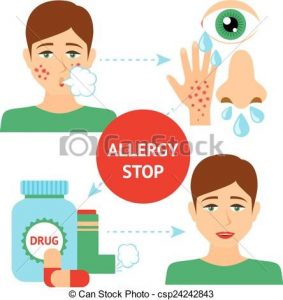2.4. Therapeutic effect
A therapeutic effect is a consequence of medical treatment of any kind, the results of which are judged to be desirable and beneficial. This is true whether the result was expected, unexpected, or even an unintended consequence of the treatment. An adverse effect, on the other hand, is a harmful and undesired effect
The difference between side effects and adverse reactions
Key difference: The key difference between the terms ‘side effects’ and ‘adverse effects’ is that during medication the side-effects of a given drug can be predicted or determined from the start, whereas the adverse-effects are unexpected and cannot be determined until they show their indications on the body.
A ‘side-effect’ of any substance is defined as an effect that happens beyond the intended primary or chief effect of that prescribed drug. These symptoms or side-effects are a natural consequence of the chemical reactions that take place between the drug and the body
Adverse effects are unexpected by both the patients and the doctor and may cause hamper in the procedure, medication or even the health of the patient. As a result, these effects are considered very harmful and dangerous for patients.
Medication Allergy
- A reaction occurring as the result of unusual sensitivity to a medication or other substance;
- May be the mild or life-threatening situation;
- May include rashes, swelling, itching, significant discomfort or an undesirable change in mental status, which should be reported to physician.
Role of QMAP.
- Should understand that information on allergies should be reported to the pharmacy and physician and this information is recorded in the resident’s record;
- Upon admission, important to document any known allergies or if there are no known allergies should also be documented;
- Provide immediate emergency care if severe rash or life-threatening breathing difficulties occur
Recognizing and Reporting Side Effects
- A client may have various side effects from taking certain medications;
- Side effects include but are not limited to the following;
- Change in behavior;
- Change in alertness;
- Change in eating or swallowing;
- Change in mobility;
- Skin rashes;
- When there is a change in the client, follow your facility’s policy on what to do and who to notify, which may include;
- Notifying the supervisor, health care professional and/or physician;
- NOT administering a medication when there is a change in the client without contact with the client’s physician

Observation of the client is an important step in the cycle of medication administration
- Client’s physician and health care providers often depend on the observations of direct care staff when evaluating residents;
- Also depend on QMAP to observe clients for both desired and undesired effect of medication
|
|
Side Effects |
Adverse Effects |
|
Definition |
It is defined as an effect that happens beyond the intended primary or chief effect of that prescribed drug. |
It is defined as the effect or reaction of prescribed medicine that is over and beyond the chief and desired action of that drug. |
|
They are |
They are temporary and resolve spontaneously. |
They are long-lasting and need intervention by the doctors. |
|
Effect |
It is an expected effect by both the doctor and the patient. |
It is an unexpected effect. |
|
Nature |
They are mild and self-resolving in nature. |
They are harmful and dangerous in nature. |
|
Occurrence |
They happen based on medication alone. |
They happen due to incorrect dosage or surgery. |
|
Treatment |
Mostly, there is no need for treatment. |
They require treatment. |
|
|
They are used for beneficial and therapeutic effects.
They can be controlled. The symptoms can be predicted. |
They can turn out to be fatal for patients. Their effect can be reduced.
The symptoms cannot be predicted. |